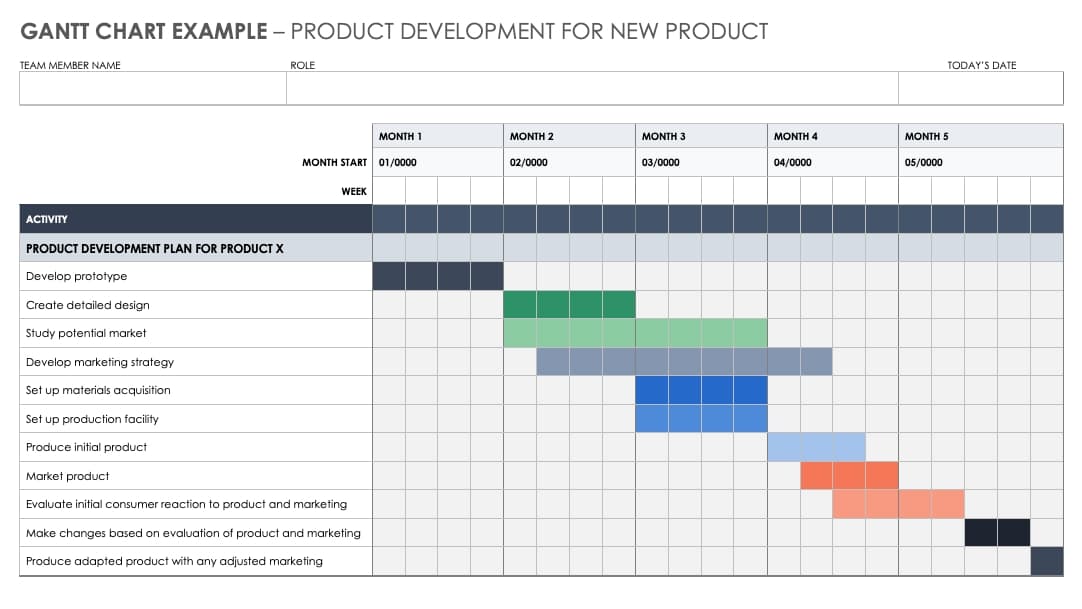Integrating project management systems with external tools and platforms is an essential strategy in today’s fast-paced business environment where efficiency and collaboration are key to success. As organizations grow and their processes become more complex, the need for seamless integration between different systems becomes increasingly critical. By connecting project management software with other tools such as communication platforms, financial software, and customer relationship management (CRM) systems, businesses can streamline workflows, enhance communication, and improve data accuracy. This integration not only optimizes project management but also ensures that all team members have access to the necessary information and resources, facilitating a more collaborative and productive work environment.
Moreover, integrating project management systems with external platforms allows for a more holistic view of project performance and organizational productivity. It enables automated data transfer, reduces the likelihood of errors, and allows for real-time updates and reporting. For instance, integrating a project management system with a financial tool can provide instant visibility into budget allocation, expenses, and financial forecasts, enabling project managers to make more informed decisions. Similarly, integration with CRM systems can offer insights into customer feedback and engagement, which can be crucial for project alignment with customer expectations. Ultimately, this interconnected approach not only enhances project management outcomes but also contributes to the overall strategic goals of the organization, driving growth and innovation.
Definition of Project Management Systems
Project Management Systems (PMS) are comprehensive platforms designed to assist project managers and teams in effectively organizing, managing, and executing their projects. These systems provide a suite of tools and functionalities that encompass various aspects of project management, including planning, resource allocation, scheduling, task distribution, risk management, and communication. By centralizing all project-related information, PMS enable stakeholders to track progress, identify potential bottlenecks, and make data-driven decisions.
A key feature of project management systems is their ability to integrate various project components into a cohesive framework, allowing for improved visibility and control over the project’s lifecycle. They facilitate collaboration among team members, provide insights through analytics and reporting, and can often be customized to suit the specific needs of the organization or project. Additionally, many PMS are scalable and adaptable, capable of managing projects of varying sizes and complexities across different industries. By streamlining project processes and fostering efficient communication, Project Management Systems play a crucial role in enhancing project outcomes and achieving organizational objectives.
Importance of Integrating External Tools and Platforms
Integrating external tools and platforms with a core project management system is crucial for several reasons, enhancing the efficiency, effectiveness, and adaptability of project management practices within an organization.
- Integration facilitates seamless data flow between different systems, reducing manual data entry and the associated risk of errors. When project management software is integrated with external tools, such as time tracking systems, financial software, or communication platforms, it ensures that data is synchronized across all tools. This synchronization helps in maintaining up-to-date information, which is vital for accurate decision-making and project tracking.
- Integrating external tools can significantly improve collaboration and communication among team members. For instance, integrating a project management system with communication tools like email, chat, or video conferencing platforms ensures that all communications are centralized and easily accessible. This centralization supports better coordination, timely information exchange, and more effective teamwork, which are essential for the success of any project.
- Integration enhances the versatility and functionality of a project management system. By connecting with specialized external tools, a project management system can extend its capabilities beyond its core functions. For example, integrating with a financial system allows for real-time budget tracking and financial reporting directly within the project management platform, providing a comprehensive view of the project’s financial health.
- Integration can lead to more informed decision-making. By aggregating data from various sources, project managers can gain deeper insights into project performance, resource utilization, and potential risks. This integrated data analysis can highlight trends, forecast potential issues, and facilitate strategic planning and adjustments.
The integration of external tools and platforms with project management systems is vital for streamlining processes, enhancing collaboration, expanding system capabilities, and supporting data-driven decision-making. It empowers organizations to adapt to the changing business environment, ensuring that they remain competitive and efficient in their project execution.
Examples of Popular Project Management Systems
- Trello: Known for its simple, card-based interface, Trello allows users to create boards, lists, and cards to organize and prioritize their projects in a flexible and fun way. It’s particularly favored for its visual appeal and ease of use, making it suitable for both small teams and individuals.
- Asana: Asana is a versatile project management tool that helps teams organize, track, and manage their work. It offers a variety of features such as task assignments, timelines, project overviews, and integrations with other tools, making it a popular choice for businesses of all sizes.
- Microsoft Project: A part of the Microsoft Office suite, Microsoft Project is a robust project management tool offering detailed project planning capabilities, resource management, progress tracking, and comprehensive reporting. It’s particularly favored in environments where detailed project scheduling and resource allocation are critical.
- Basecamp: Basecamp is a user-friendly project management system that provides a variety of tools for communication, task assignment, and progress tracking. It’s designed to keep teams organized and informed, with a strong emphasis on simplicity and clarity in project management.
- JIRA: Originally designed for bug and issue tracking in software development, JIRA has evolved into a powerful project management tool for various types of projects. It offers detailed issue tracking, agile project management features, and extensive customization options, making it a go-to choice for software development teams.
- Smartsheet: Smartsheet offers a spreadsheet-like interface with enhanced project management features such as Gantt charts, automation, and collaboration tools. It’s known for its flexibility and is used across different industries for planning, tracking, and executing projects.
- Monday.com: Monday.com is a flexible platform that adapts to various project management and workflow needs. It offers a highly visual and customizable interface, with features that support task management, tracking, and collaboration, making it popular among creative and tech teams alike.
These systems vary in their specific features and strengths, catering to different project management needs and preferences. Choosing the right system typically depends on factors like the size of the team, the complexity of projects, and the specific features an organization values most.
Types of Project Management Systems
Project management systems can be categorized based on various criteria, including their functionality, deployment method, and the specific industries or types of projects they are designed for. Understanding these categories can help organizations select a system that best fits their needs:
Desktop vs. Web-based Systems:
- Desktop Systems: These are installed on individual computers. They typically offer robust features and powerful processing capabilities without the need for an internet connection. However, they might lack real-time collaboration features.
- Web-based Systems (Cloud-based): These systems are hosted on the cloud and can be accessed from anywhere via the internet. They facilitate real-time collaboration, updates, and are generally subscription-based with different tiers of service.
Individual vs. Collaborative Systems:
- Individual Project Management Systems: Designed for single users, these systems focus on tasks and schedules pertinent to personal productivity and may not include extensive collaboration tools.
- Collaborative Project Management Systems: These are designed to facilitate teamwork, offering communication tools, shared workspaces, and features that support multiple users working together on projects.
General vs. Industry-specific Systems:
- General Project Management Systems: These offer a broad range of features applicable to a wide variety of industries and project types. They are flexible and can be customized to suit various project management needs.
- Industry-specific Project Management Systems: Tailored to the unique needs of specific industries (e.g., construction, IT, healthcare), these systems include specialized tools and workflows relevant to those fields.
Agile vs. Traditional Systems:
- Agile Project Management Systems: These systems support agile methodologies like Scrum or Kanban, focusing on iterative development, flexibility, and continuous feedback.
- Traditional (Waterfall) Project Management Systems: Suited for linear project management approaches, these systems are ideal for projects where tasks are completed in a sequential order, and scope, time, and cost are determined early in the project lifecycle.
Integrated vs. Standalone Systems:
- Integrated Project Management Systems: These systems offer a suite of tools that cover various aspects of project management, such as resource allocation, time tracking, communication, and documentation, all within one platform.
- Standalone Project Management Systems: Focused on specific aspects of project management, such as task tracking or scheduling, these systems are less comprehensive but can be highly effective for specific needs.
By identifying the type of project management system that aligns with their operational requirements, project complexity, team size, and industry, organizations can optimize their project management processes, enhance collaboration, and increase overall productivity.
Predictions for the Future of Project Management System Integration
The future of project management system integration points towards more sophisticated, seamless, and intelligent solutions, driven by the rapid advancement of technology and evolving business needs. Here are some key predictions for the future of this field:
- Increased AI and Machine Learning Integration: Artificial intelligence (AI) and machine learning (ML) are set to play a more significant role in project management systems. They can provide predictive analytics, automate routine tasks, offer insights into project risks, and optimize resource allocation. AI could enable real-time adjustments to project plans based on emerging data, enhancing decision-making and efficiency.
- Enhanced Collaboration Tools: As remote work continues to rise, project management systems will likely focus more on improving virtual collaboration. This could include more advanced communication tools, virtual whiteboards, and real-time project updates, ensuring team members can collaborate effectively, irrespective of their location.
- Greater Emphasis on Integration Capabilities: There will be a stronger focus on the ability of project management systems to integrate seamlessly with a wide range of external tools and platforms. This interoperability will be crucial for ensuring that data flows smoothly across different systems, enhancing visibility and control over various aspects of projects.
- Customization and Flexibility: Project management systems will likely become more adaptable, allowing organizations to customize tools and workflows to fit their specific project needs and management styles. This flexibility will enable companies to tailor the systems to their unique processes, rather than adapting their processes to fit the system.
- IoT and Real-time Data: Integration with the Internet of Things (IoT) could provide project managers with real-time data from various sources, improving monitoring and management of on-site project elements. For instance, in construction project management, IoT devices could track equipment usage, worker productivity, and resource allocation.
- Blockchain for Enhanced Security and Transparency: Blockchain technology could be integrated into project management systems to offer improved security, traceability, and transparency. This would be particularly beneficial in managing contracts, ensuring compliance, and securing transactions and communications within projects.
- Sustainability and Social Responsibility: Future project management systems might include features and integrations that help organizations manage and report on sustainability goals, social impact, and corporate social responsibility (CSR) initiatives, aligning project outcomes with broader environmental and social objectives.
- User Experience and Accessibility Improvements: As user expectations evolve, there will be a greater emphasis on improving the user experience and accessibility of project management systems, making them more intuitive and user-friendly for individuals with varying levels of expertise and abilities.
The future of project management system integration is likely to be characterized by more intelligent, flexible, and collaborative tools that not only enhance project efficiency and effectiveness but also align with broader organizational and societal goals.
Conclusion
The integration of project management systems with external tools and platforms is evolving into a critical component of effective project management, reflecting broader trends in technology and business. As organizations continue to navigate complex, rapidly changing environments, the ability of these systems to adapt and provide cohesive, real-time insights and collaboration will be paramount. The future promises a landscape where AI, machine learning, enhanced collaboration tools, and advanced integration capabilities will drive project management systems towards greater efficiency, adaptability, and strategic alignment.
Organizations that embrace these advancements and integrate their project management systems with a broad ecosystem of external tools will gain a competitive edge. They will achieve improved visibility, control, and agility in their projects, enabling them to make informed decisions, adapt to changes swiftly, and deliver projects successfully. As these systems become more user-centric, they will also empower teams, foster innovation, and align project outcomes with broader business goals and values, including sustainability and social responsibility.
In conclusion, the ongoing evolution of project management system integration represents a significant step forward in how organizations plan, execute, and monitor projects. It heralds a future where technology not only simplifies and enhances project management processes but also contributes to the strategic achievements of organizations in an increasingly complex and interconnected world.









